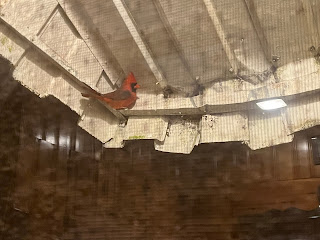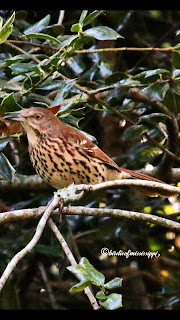BIRDIE WORDS - 6/17/20
BIRDIE WORDS
BY: PEGGY WILLIAMS AKA Birdie of Mississippi
No, I don’t mean “Tweet, tweet, tweet!” There are some words that “real” Birdie people use that is common terminology for them, but many terms are unfamiliar to most of us. As I have become a “Birdie” I have begun to pick up and understand many of the words that are commonly used to describe bird behavior or basic knowledge of birds. There is also a lot of scientific lingo because the study of birds is a science called Ornithology that is actually a branch of Zoology. The study of birds has a large contribution made by amateurs (like myself) in getting people interested in birds for both entertainment and the science involved with birds and our eco-system. Amateurs also give of their time, finances and resources. On the Global Big Day on May 9th amateurs from all over the world put in their time by making bird counts that helped the science field know more about bird populations all over the world. A lot of their time is also given to feeding, providing water and putting out bird houses. All of these things also require a financial investment by amateurs, but these bird lovers freely give of all these things because they feel they are rewarded by the birds themselves.
I always enjoyed learning new vocabulary words when I was in school and so learning new words in the bird field has been an additional fun thing about birds that I have enjoyed. My latest new word is “passerine.” Passerine is a bird of the order of “Passeriformes” according to Wikipedia. This is a big word for birds that like to perch on a branch! Apparently not all birds are “perching birds”, but this classification of birds includes more than half the bird world with more than 5,000 unique species of birds according to The Spruce website. These are all very common birds to most of us such as “warblers, thrushes, tanagers, sparrows, thrashers, finches, jays, larks, tits, nuthatches, chickadees, Orioles, and wrens are all passerines.”
There are actual physical characteristics that these birds have. They have 3 forward pointing toes and 1 backward pointing toe and a tendon in the back of their leg that allows them to curl and grip their toes around a branch or a rock. This gripping action locks their feet and legs into place so that they can sleep without falling off their branch.
Baby passerine chicks also have characteristics that cause them to not be able to leave the nest and they need their parents help for a while before going on their own. They are in an undeveloped state at birth. They are born with their eyes closed and are bald having little or no down on them. They also require their food from their parents. Their brains have not grown fully at birth and will continue to grow larger during the fledgling stage. This gives them an advantage over birds that leave the nest early because their brain development must come from what’s provided inside the egg. Since most passerines have a much larger brain in contrast to their body size, many of them show more intelligence. The more that I “Look at the birds of the air….” Matthew 6:26 the more I see the intelligence of my Creator and how He worked out every tiny detail for birds and every detail for us, too. My photos may be viewed & “LIKED” on Facebook, Instagram and Pinterest - “Birdie of Mississippi”. E-mail: birdieofmississippi@gmail.com - Read my Blog @ http://www.birdieofmississippi.blogspot.com




Comments
Post a Comment